Cook this classic Chinese dish made of silky glass noodles tossed with crunchy Napa cabbage in a flavourful braising sauce. It is quick, tasty and filling!
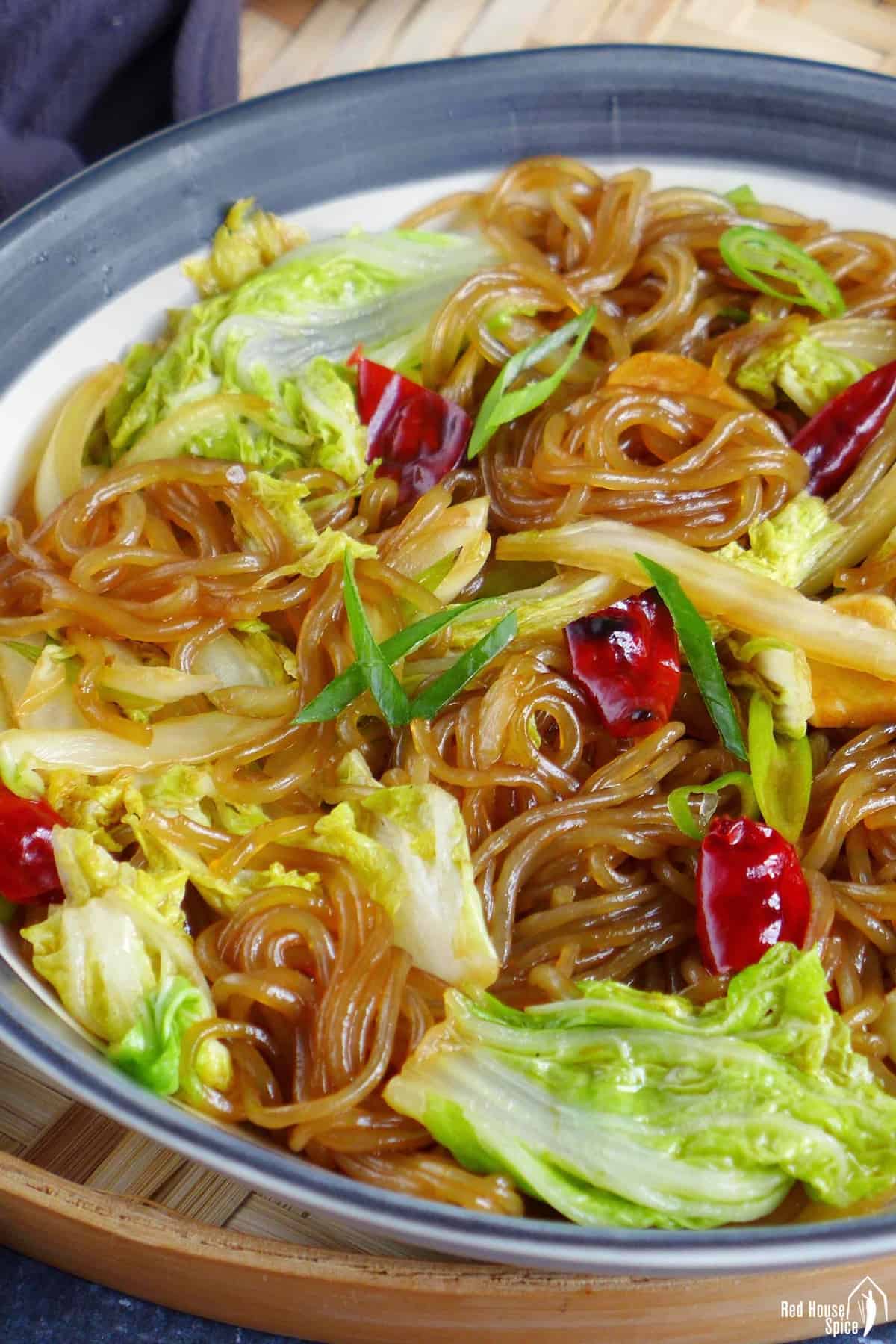
Jump to:
About the dish
Glass noodles with napa cabbage (白菜炖粉条) is a Northern Chinese classic. It’s quite simple to make but delivers big flavours!
The glossy, slippery glass noodles and crunchy napa cabbage are tossed in a savoury braising sauce made with a combination of soy sauce and oyster sauce.
Like many traditional dishes, there are a number of regional variations of this dish. Some, like me, prefer adding Sichuan peppercorn and dried chilli pepper to give it a touch of heat. Some like the dish on the saucy side, while others include proteins, such as pork.
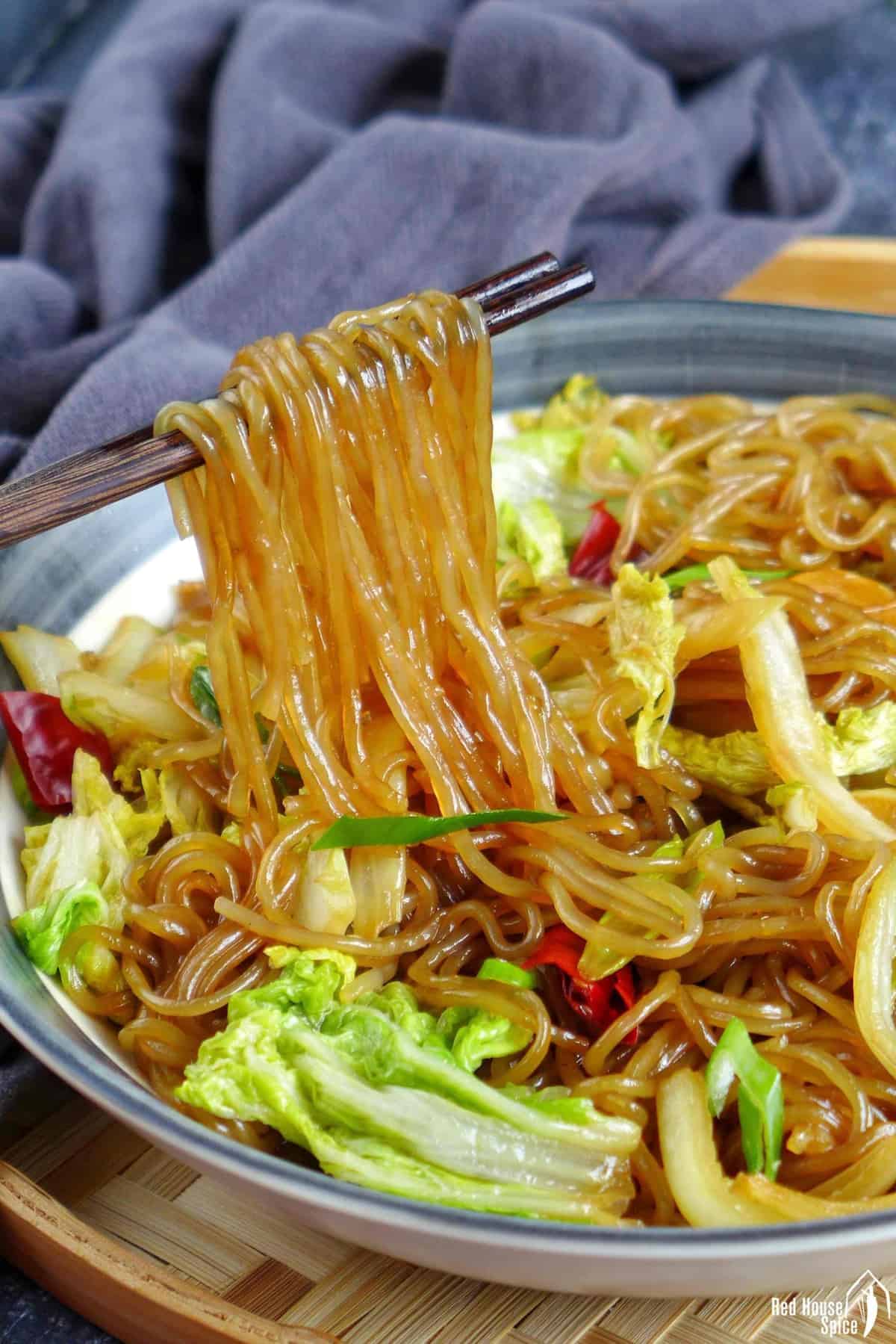
I happen to like this simpler version, where the bouncy texture of the glass noodles and the crispiness of the cabbage really shine through!
What are Glass Noodles?
Also known as cellophane noodles, glass noodles are named as such because of their semi-transparent appearance and springy, slippery texture once cooked.
Unlike regular wheat noodles or egg noodles (e.g. Yi Mein), they are made from the starch of sweet potatoes, potatoes, mung beans, etc. Thus they are gluten-free. They come in different forms and shapes.
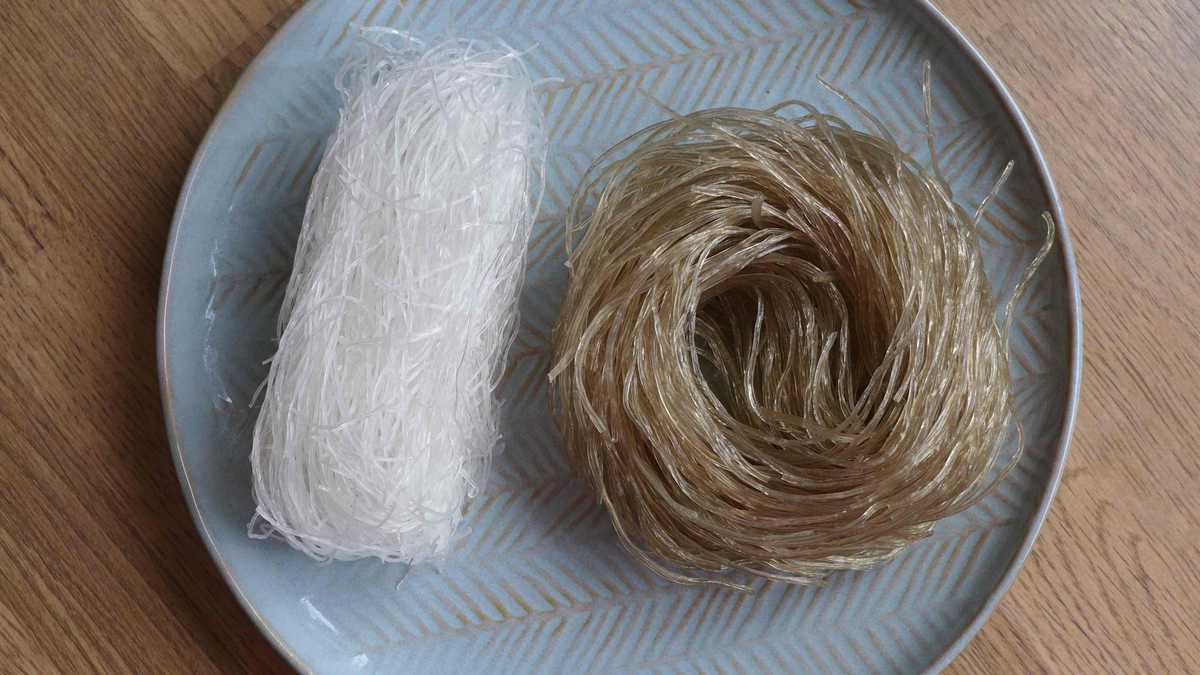
- This recipe uses the thick type (right in the image above), which is commonly used in Northern and Western Chinese regions (also popular in Korean cuisine). Named Fen Tiao/粉条 in Chinese (meaning starch noodles), they can be either round or flat and are made with sweet potato or potato starch. I used the same to make the classic Sichuan street food Hot and Sour Noodle Soup.
- You may also encounter the thinner type (left in the image above) known as bean thread noodles or mung bean vermicelli. These are called Fěn Sī /粉丝 in Chinese which translates as “starch threads”. Mung bean starch is their key component. Dishes using this type of noodle include Ants Climbing a Tree , Glass Noodle Salad, Garlic Shrimp with Vermicelli, etc.
You can find glass noodles in Chinese or Asian grocery stores in dried form, so they need to be rehydrated before using.
🛎 NOTE: Don’t confuse the thin type of glass noodles with rice vermicelli (what you find in Singapore Mei Fun). They’re made with different types of starch. The former looks much more transparent than the latter once cooked.
How to rehydrate
You can rehydrate glass noodles in two ways, using cold or hot water.
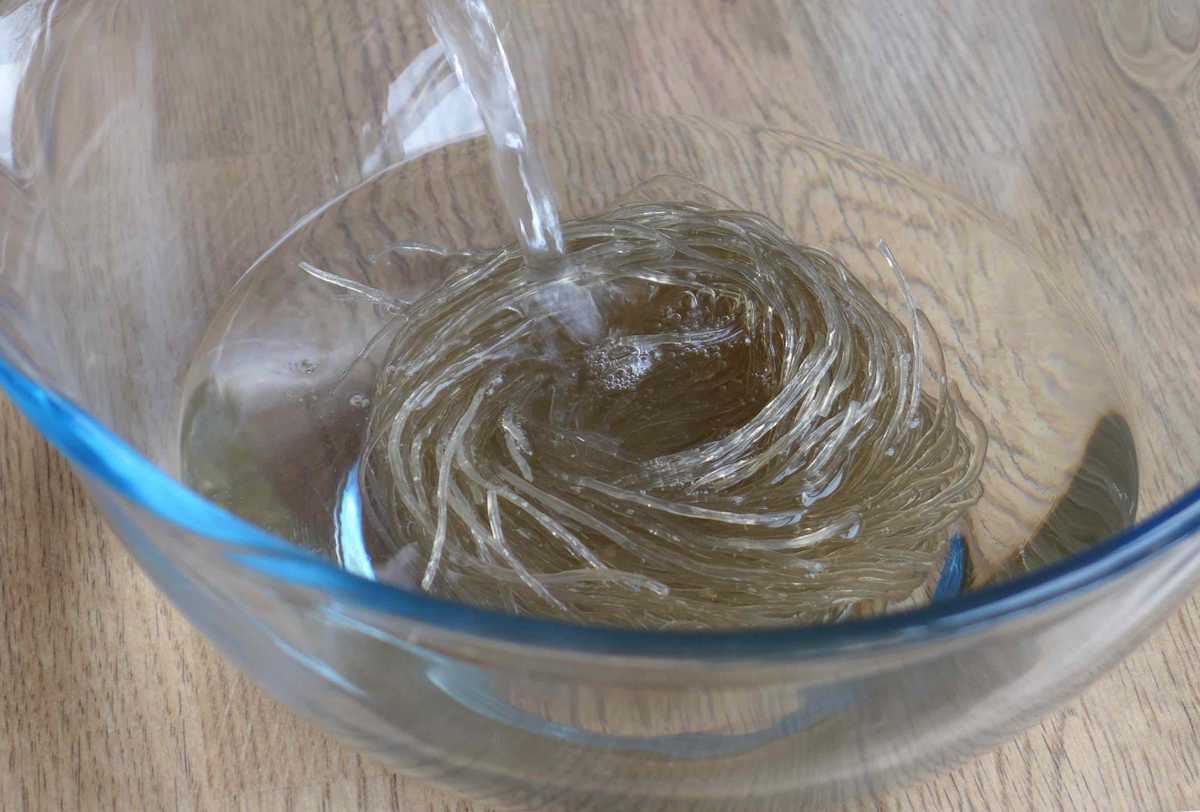
- Soak in hot water. I use this method for thick glass noodles, the ones made with sweet potato or potato starch. Soak them in hot water until they expand and become pliable. Five to ten minutes should be enough to get them sufficiently tender but still hard to break with nails. If you want them softer for adding to dumpling fillings, soak a little longer.
- Soak in cold water. This method will take longer. However, I think this is the best option when using thin glass noodles (mung bean vermicelli) as it is less harsh and will allow the noodles to soften gently.
Other ingredients
Today’s recipe does not require a lot of ingredients to make. Apart from glass noodles and Napa cabbage, you will only need a few aromatics, spices, and basic Chinese condiments.
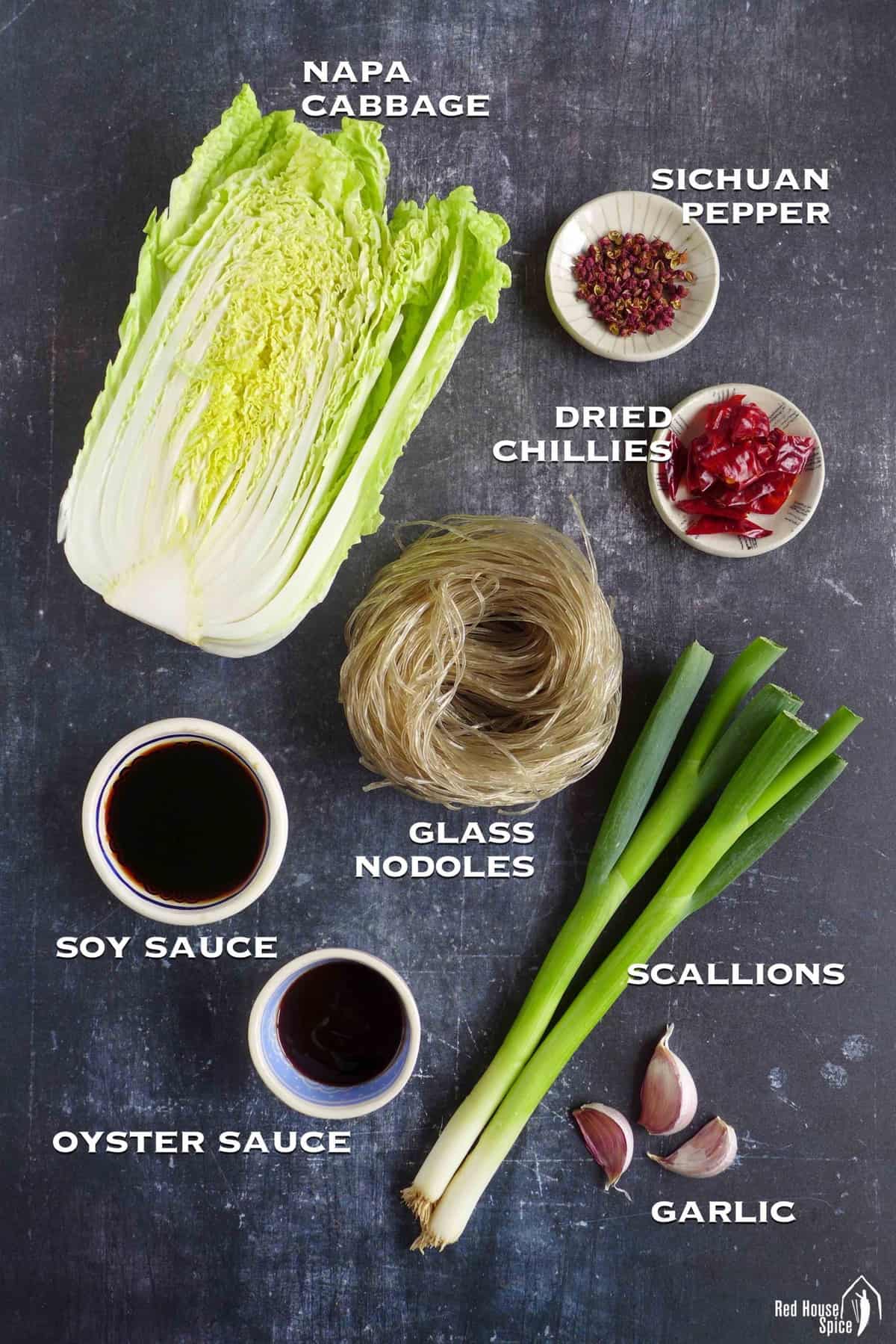
- Dried sweet potato glass noodles (or potato glass noodles). If you have trouble sourcing these two types, use mung bean vermicelli to substitute. Since it’s much easier to cook, reduce the cooking time accordingly.
- Napa cabbage. Commonly referred to as Chinese cabbage, it was a must-have vegetable in Winter when I was small. Nowadays you can find it all year round (Have you tried my recipe for Hot & Sour Napa Cabbage Stir-fry?).
- Spices and aromatics. Garlic, scallions, whole Sichuan pepper, and dried chilli pepper give the dish a fragrant, spicy, mouth-numbing flavour base!
- Sauces. For the umami-rich braising sauce, I used light and dark soy sauce, oyster sauce, and water.
🛎 SUBSTITUTES
- Vegan/vegetarian: Swap the regular oyster sauce with vegetarian stir-fry sauce (素⻝蚝油) or mushroom vegetarian stir-fry sauce (⾹菇素⻝蚝油).
- Gluten-free: use the gluten-free versions of soy sauce and oyster sauce.
Cooking procedure
Preparations
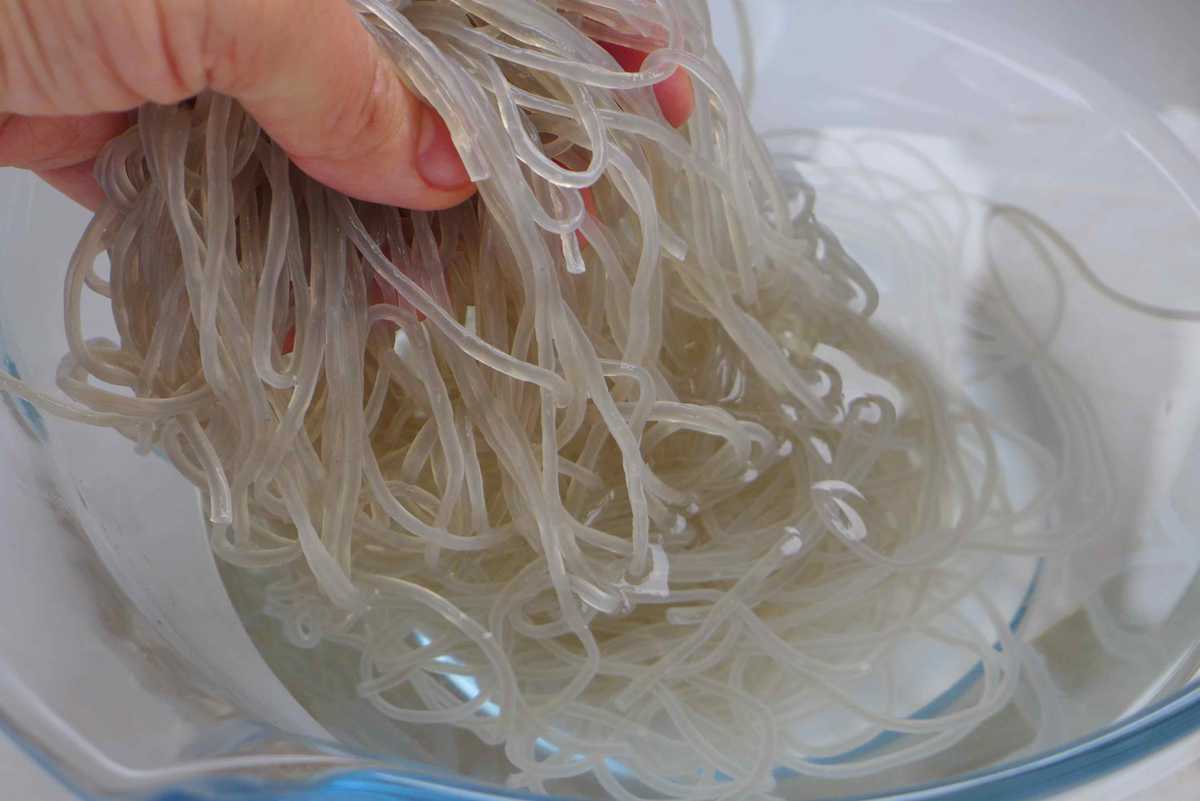
Soak your noodles. Place them in a bowl of hot water and soak for five minutes. If using the flat ones, increase soaking time to 10 minutes. Once they are pliable but still have a bite to them, rinse under running water then drain well.

Prepare the napa cabbage. Wash and dry thoroughly. Tear the leafy part off into small pieces, then slice the firm white part into strips.
Stir fry & braise
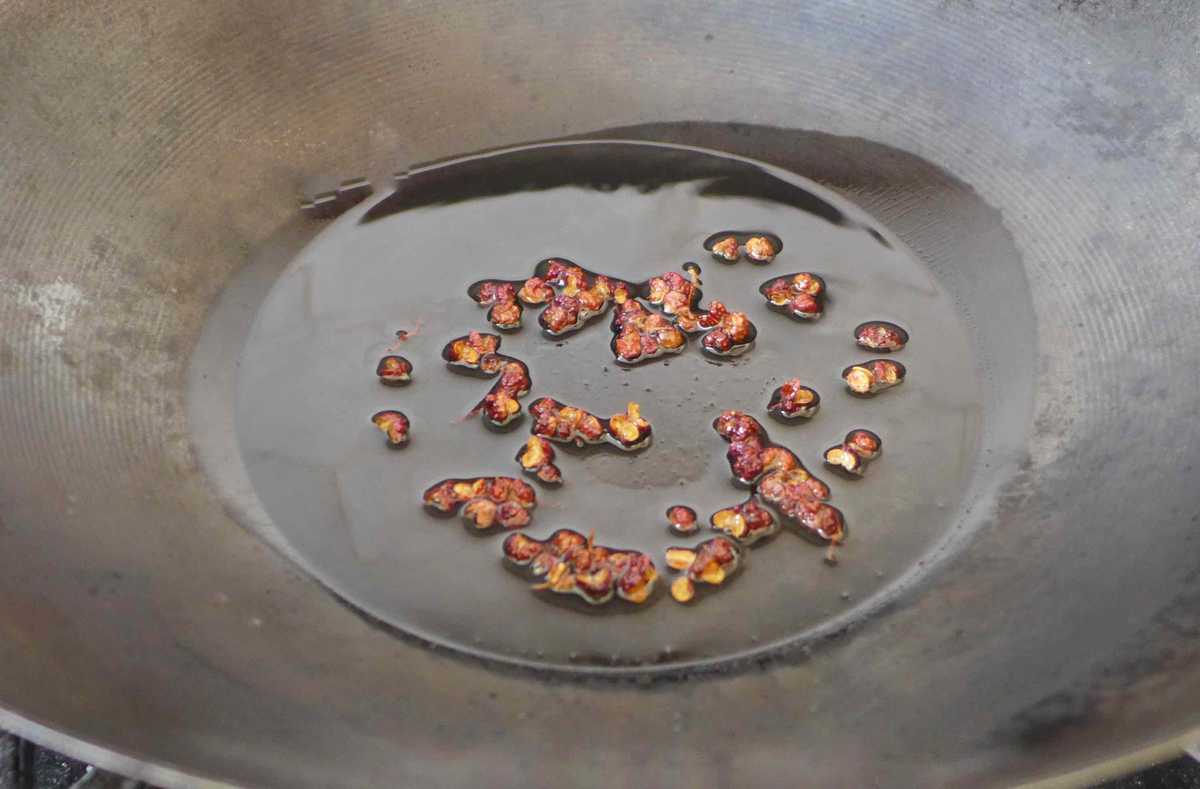
Add oil and whole Sichuan peppercorn to a cold wok (frying pan/skillet). Toast over low heat until aromatic and bubbles appear. Use a spatula to scoop the peppercorn out of the hot oil and discard.
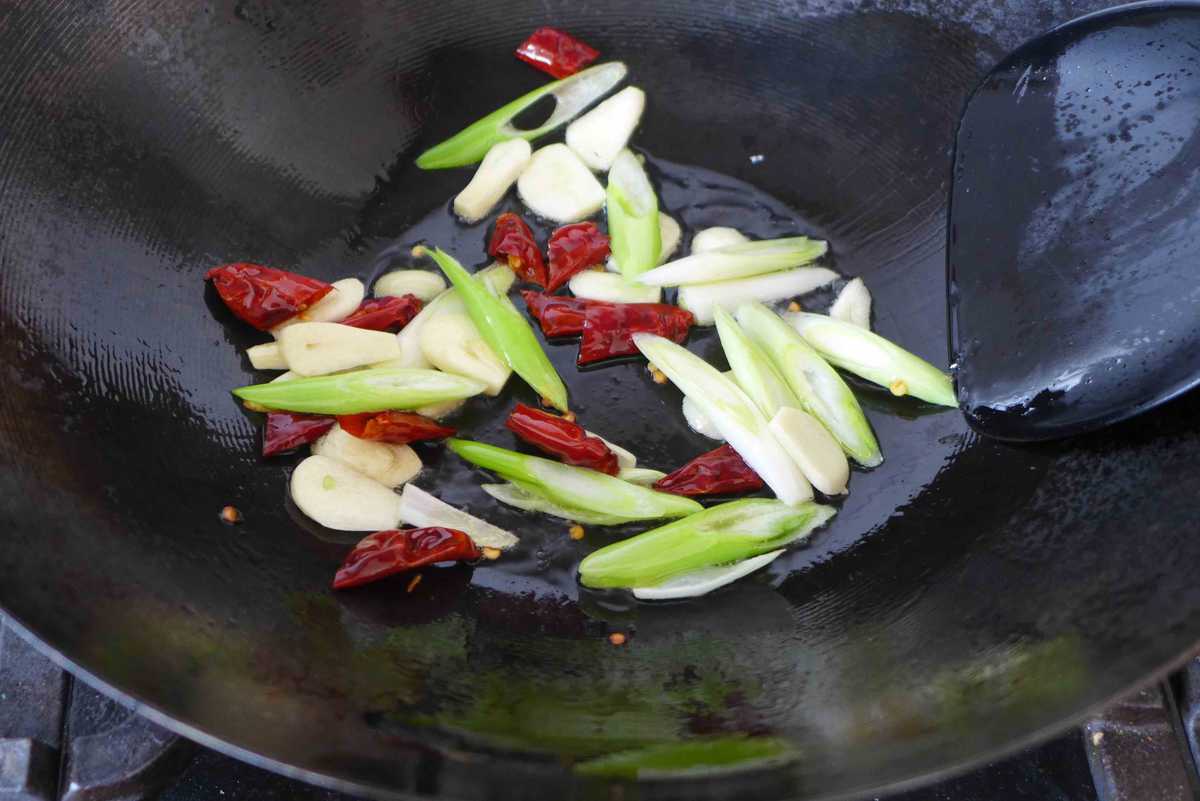
Adjust the heat to medium-high and add dried chilli pepper, garlic and scallions (spring onion) to the hot oil.
Once the garlic edges turn golden and slightly crisp, put in white strips of the Napa and stir-fry for 30 seconds or so.
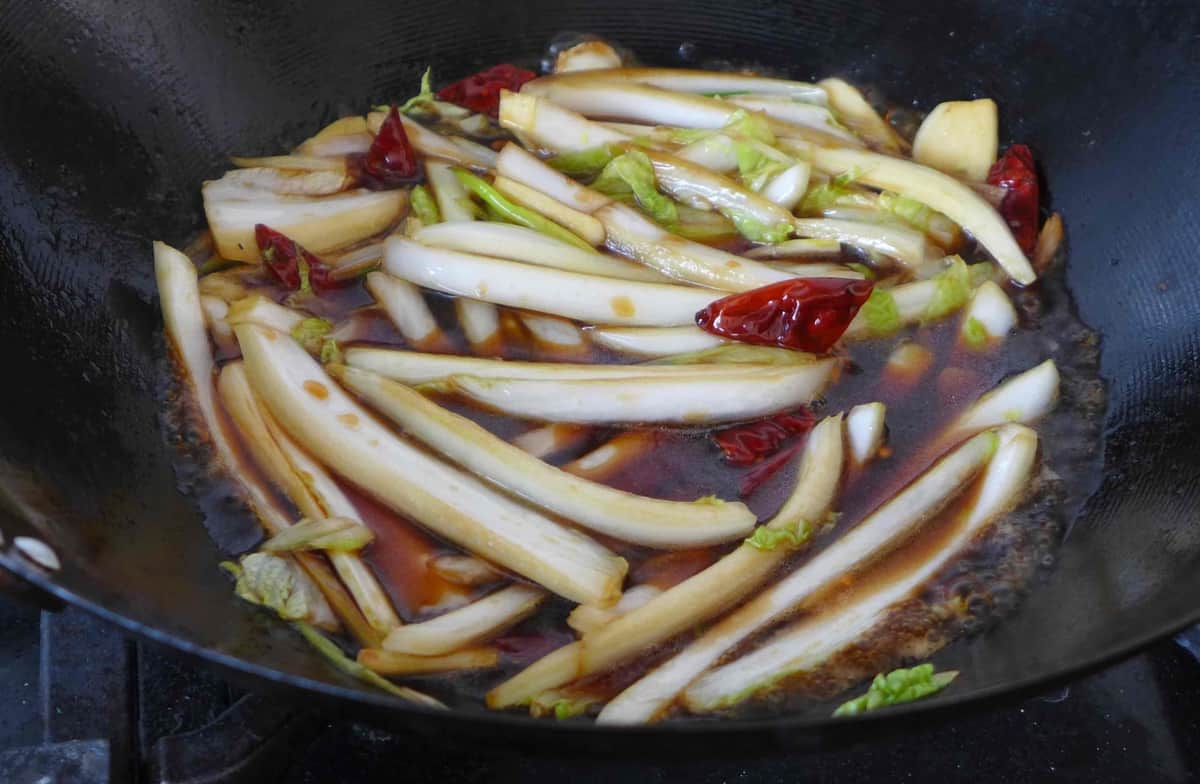
Pour in light soy sauce, dark soy sauce, oyster sauce and water. Toss everything together, so the sauce coats the vegetables evenly.
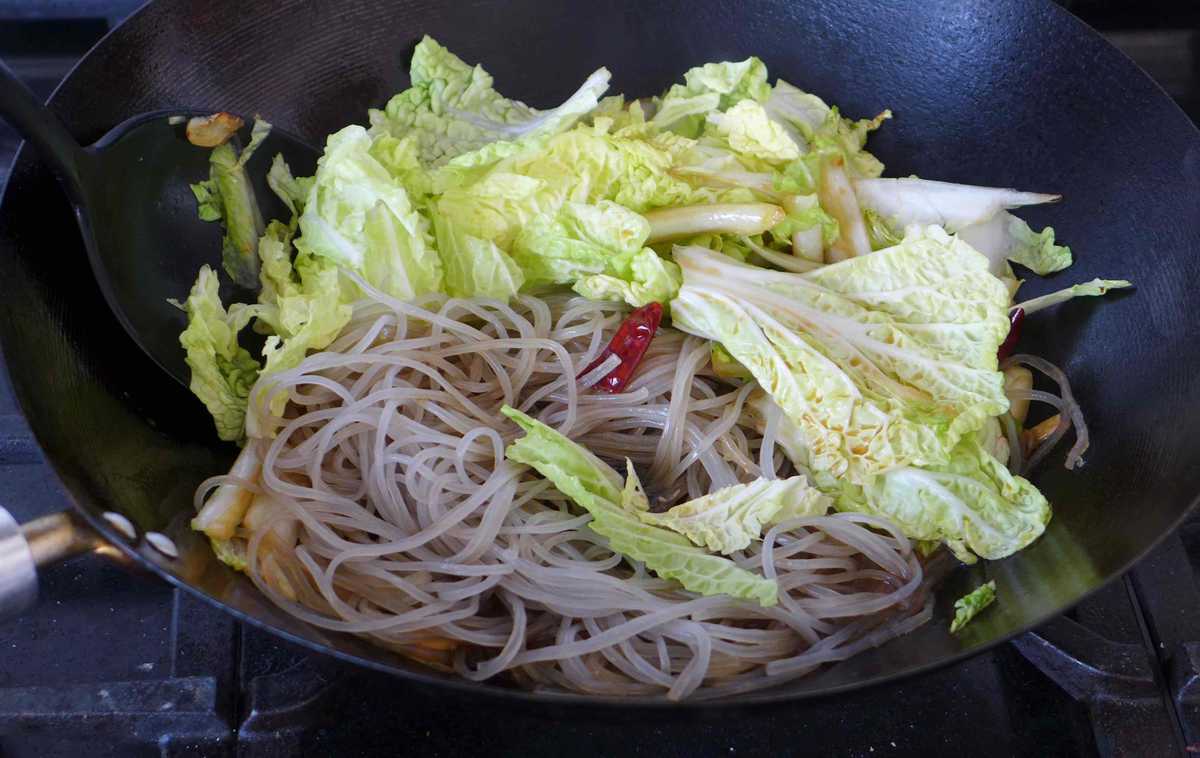
Add the noodles and green leafy part of the cabbage and mix well.
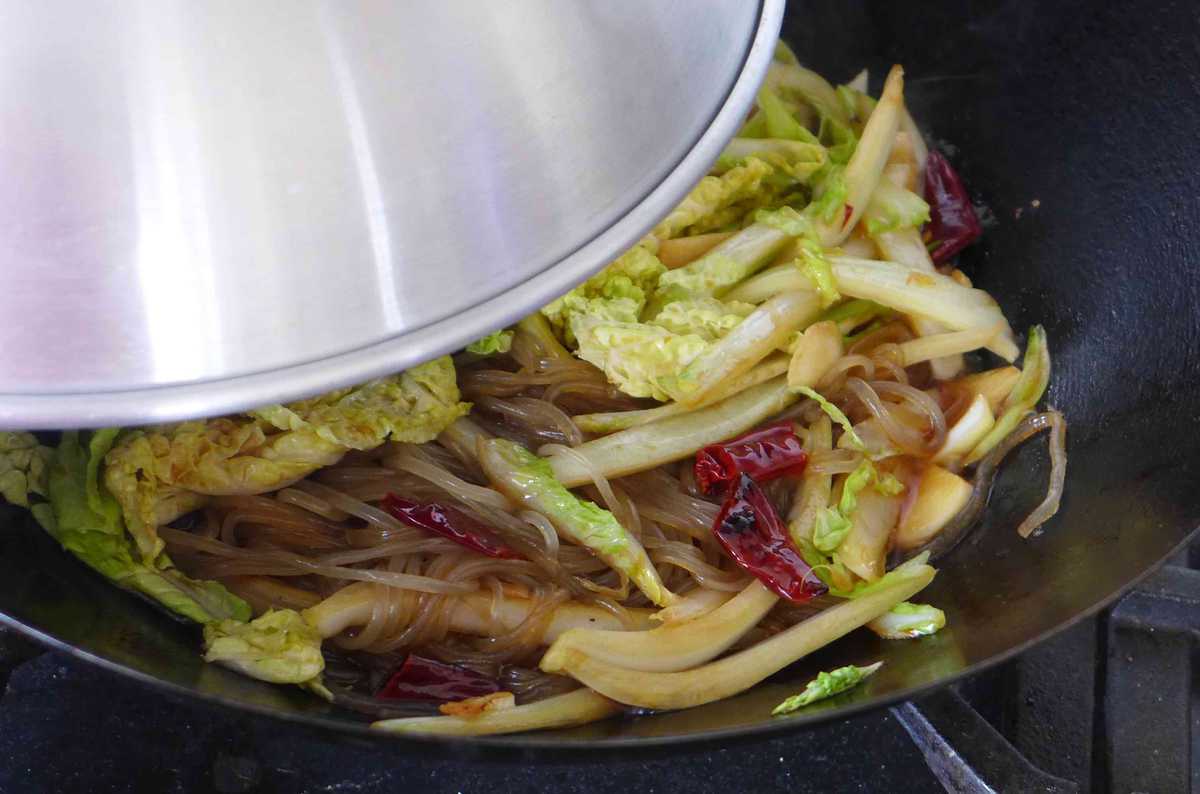
Cover the wok with a lid. Leave to cook for about 4 minutes. At this moment, the noodles should have fully absorbed the cooking liquid.
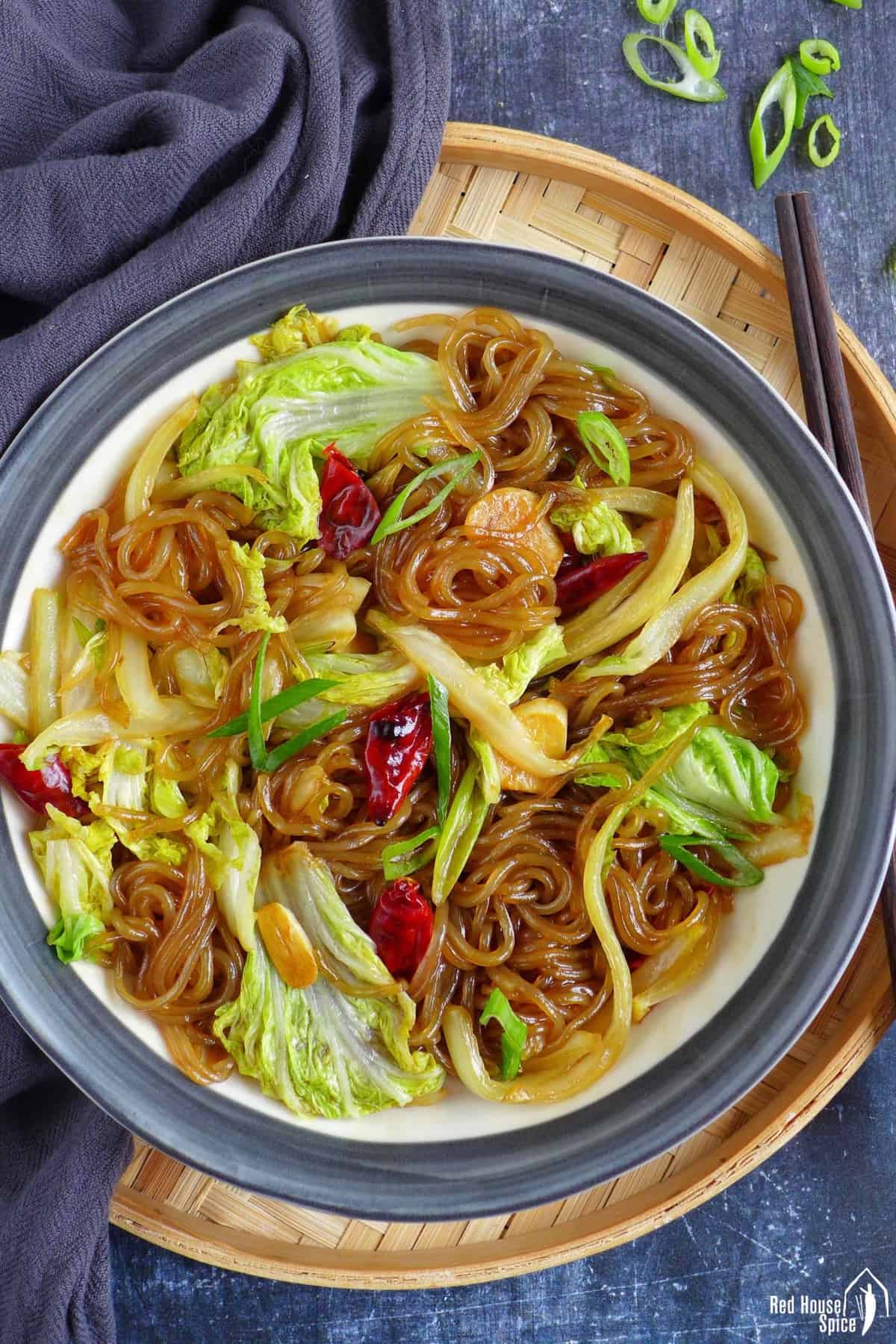
Transfer everything to a plate and garnish with scallions. Serve warm on its own or as part of a multi-dish meal with steamed rice.
Cooking Tips
- Glass noodles are very absorbent, so reduce the cooking time or add more sauce and water if you want your dish to be on the saucy side.
- Use a large wok or pan when making this. The napa cabbage leaves will initially take up a lot of space, but they will shrink as they cook.
Other dishes you may like
📋 Recipe card
Love this recipe? Please leave a 5-star 🌟🌟🌟🌟🌟 rating in the recipe card below & if you REALLY like it, consider leaving a comment as well!
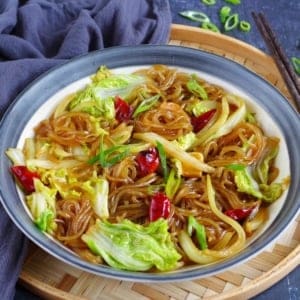
Glass Noodles with Napa Cabbage (白菜炖粉条)
Ingredients
- 80 g dried sweet potato noodles (or potato noodles) - about 3oz (see note 1 for substitutes)
- ½ head Napa cabbage (Chinese cabbage) - about 300g/11oz
- 1 tablespoon neutral cooking oil
- 1 teaspoon whole Sichuan pepper
- Dried chilli pepper - to taste
- 3 cloves garlic, sliced
- 2 stalks scallions, chopped
- 1 tablespoon light soy sauce
- 1 teaspoon dark soy sauce
- 1 tablespoon oyster sauce - see note 2 for vegan substitutes
- 120 g water - about ½ cup
Instructions
Prepare
- Put the dried noodles into a large bowl. Add hot water and leave to soak for 5 minutes until they become pale and pliable but still hard to break with nails (see note 3). Rinse under running water to cool. Drain well then set aside.
- Tear the leafy part of the napa cabbage into pieces, then cut the firm white part into strips.
Stir-fry
- Add oil and whole Sichuan pepper to a cold wok (frying pan/skillet). Over low heat, toast the peppercorn until you see intense bubbles appear and smell its fragrance. Use a spatula to remove it from the wok leaving the oil in the wok.
- Turn up the heat to medium-high. Add dried chilli pepper, garlic and scallions (leave some for garnishing later). Fry until the garlic turns lightly golden on the edge.
- Put in the white part of the napa cabbage. Stir fry for 30 seconds or so. Add light soy sauce, dark soy sauce, oyster sauce and water.
- Toss to evenly distribute the seasoning, then put in the leafy part of the cabbage and the noodles.
Braise
- Mix well then cover with a lid. Leave to cook over medium heat for about 4 minutes. The cooking liquid should be fully absorbed by the noodles at this point (if not, cook a little longer uncovered).
- Sprinkle the remaining scallions to garnish. Serve warm on its own, or as part of a multi-dish meal with steamed rice.
NOTES
NUTRITION
NUTRITION DISCLOSURE: Nutritional information on this website is provided as a courtesy to readers. It should be considered estimates. Please use your own brand nutritional values or your preferred nutrition calculator to double check against our estimates.


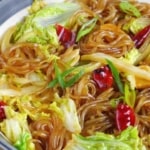
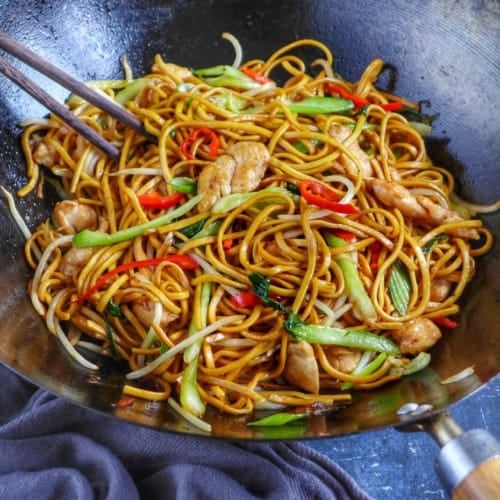
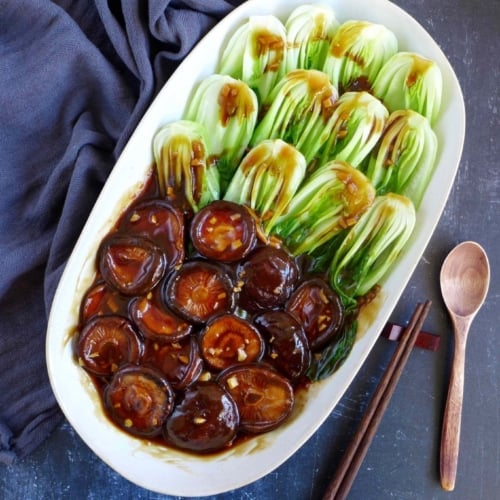
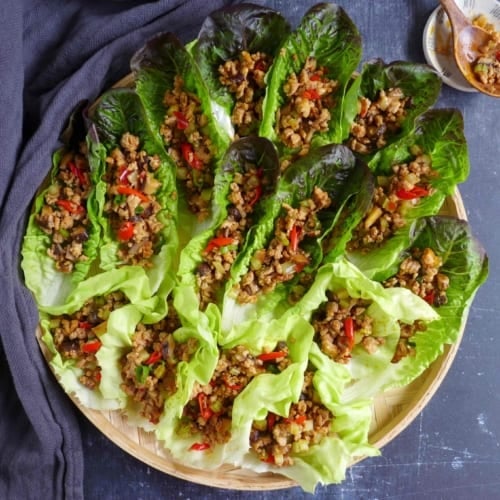
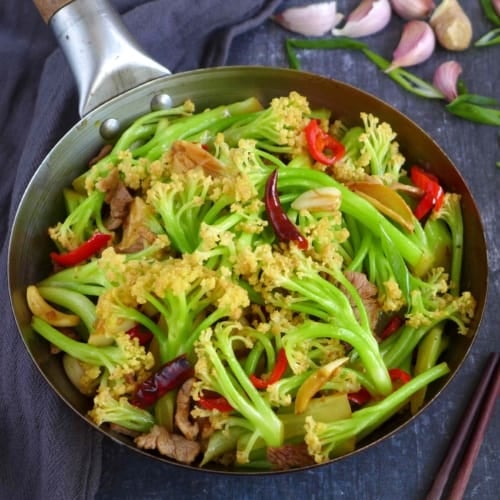
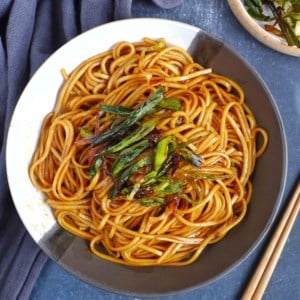


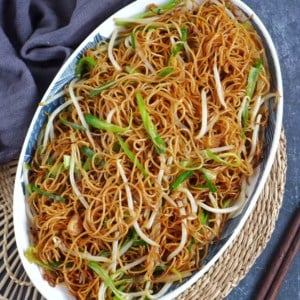
My teenage daughter and I loved this, she wants me to make it every week. Easy to add some cooked meat or tofu on the side.Perfect meal for a winter weeknight.Thanks!
You’re welcome Diana!
I cooked this tonight.
Another great one, Wei! Suitably flavoursome and spicy without challenging my eyes! Also it looks good in the bowl.
As always there were minor substitutions: bok choy instead of chinese cabbage; fresh chilli instead of dried.
My partner and I loved it!!!
Glad you liked my recipe! Like the way you improvise with what you have at hand.